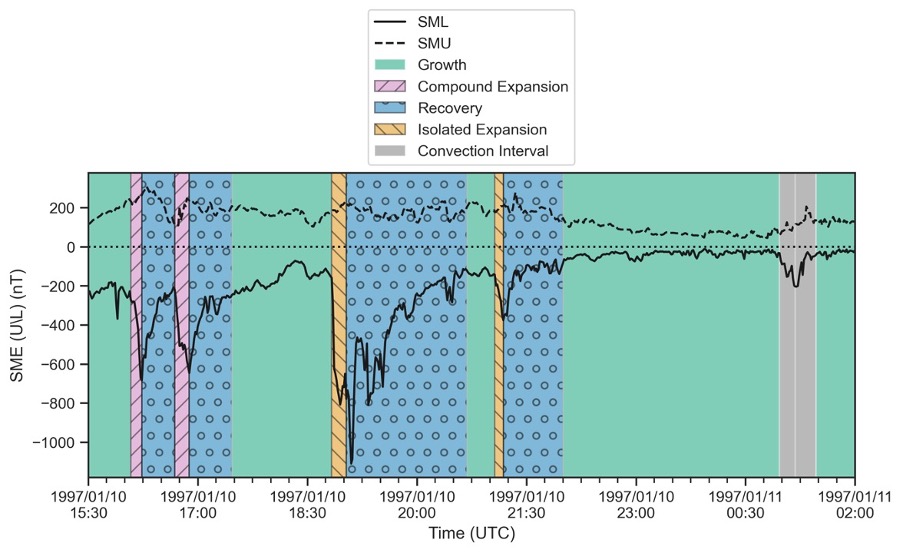MIST
Magnetosphere, Ionosphere and Solar-Terrestrial
Quantifying the number of false positive substorms identified in the SuperMAG SML index arising from enhancements in magnetospheric convection
By Christian Lao (MSSL, University College London)
Substorms can be identified from negative bays in the SML index, which traces the minimum northward ground magnetic deflection at auroral latitudes, produced by enhancements of the westward electrojet. For substorms, negative bays are caused by the closure of the Substorm Current Wedge through the ionosphere, typically localized to the nightside and centred around 23-00 magnetic local time (MLT). In this case, the equivalent current pattern that causes the magnetic deflections is given the name Disturbance Polar (DP) 1. However, negative bays may also form when the westward electrojet is enhanced by increased convection, driving Pedersen and Hall currents in the auroral zone. Convection enhancements also strengthen the eastward electrojet, monitored by SMU index. In this case, the equivalent current pattern that produces the magnetic deflections is called DP2.
In this study, we investigated the contributions of the magnetic perturbations from the DP1 and DP2 current patterns to substorm-like magnetic bays identified in SML using the SOPHIE technique of Forsyth et al. (2015), https://doi.org/10.1002/2015ja021343. SOPHIE attempts to distinguish between the DP1 and DP2 enhancements, whereas other SML-based substorm identification methods don’t (e.g. Newell & Gjerloev, 2011; Ohtani+, 2020; etc). However, despite this, we find evidence that between 1997 and 2019 up to 59% of the 30,329 events originally identified by SOPHIE as substorms come from enhancements of DP2, which are unrelated to substorm phenomena, on top of the 2,627 convection enhancement events already identified. We highlight that any “substorm” list is, in fact, a list of magnetic enhancements, auroral enhancements, etc., which may or may not correspond to substorm activity and should be treated that way.

See publication for details:
, , , & (2025). Separating DP1 and DP2 current pattern contributions to substorm-like intensifications in SML. Journal of Geophysical Research: Space Physics, 130, e2024JA033592. https://doi.org/10.1029/2024JA033592